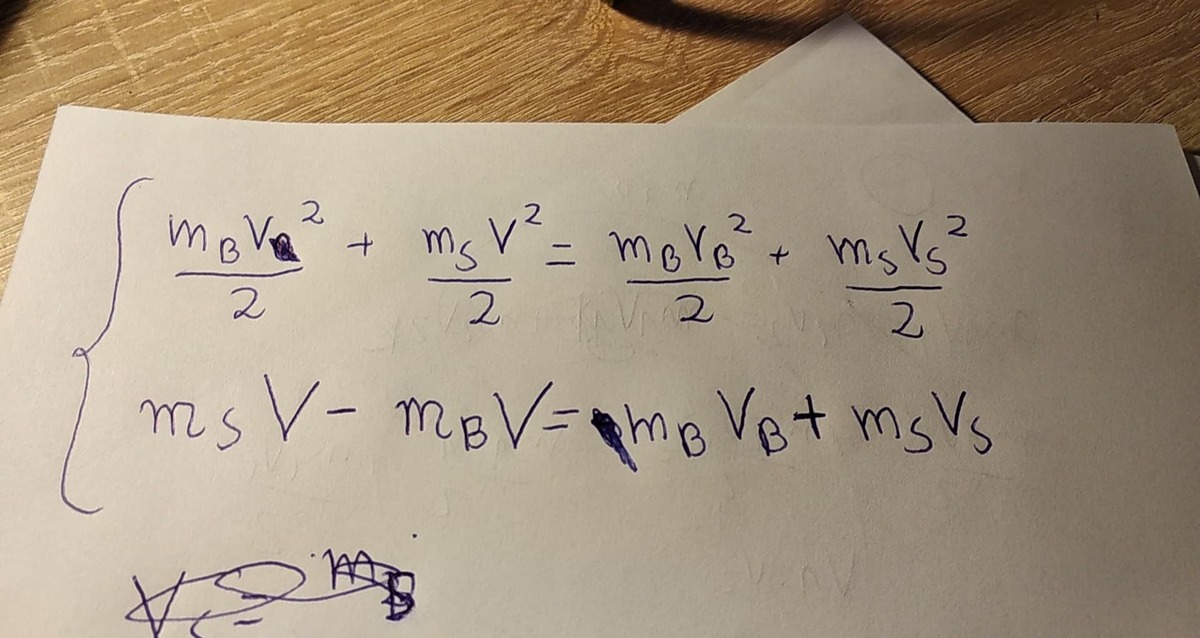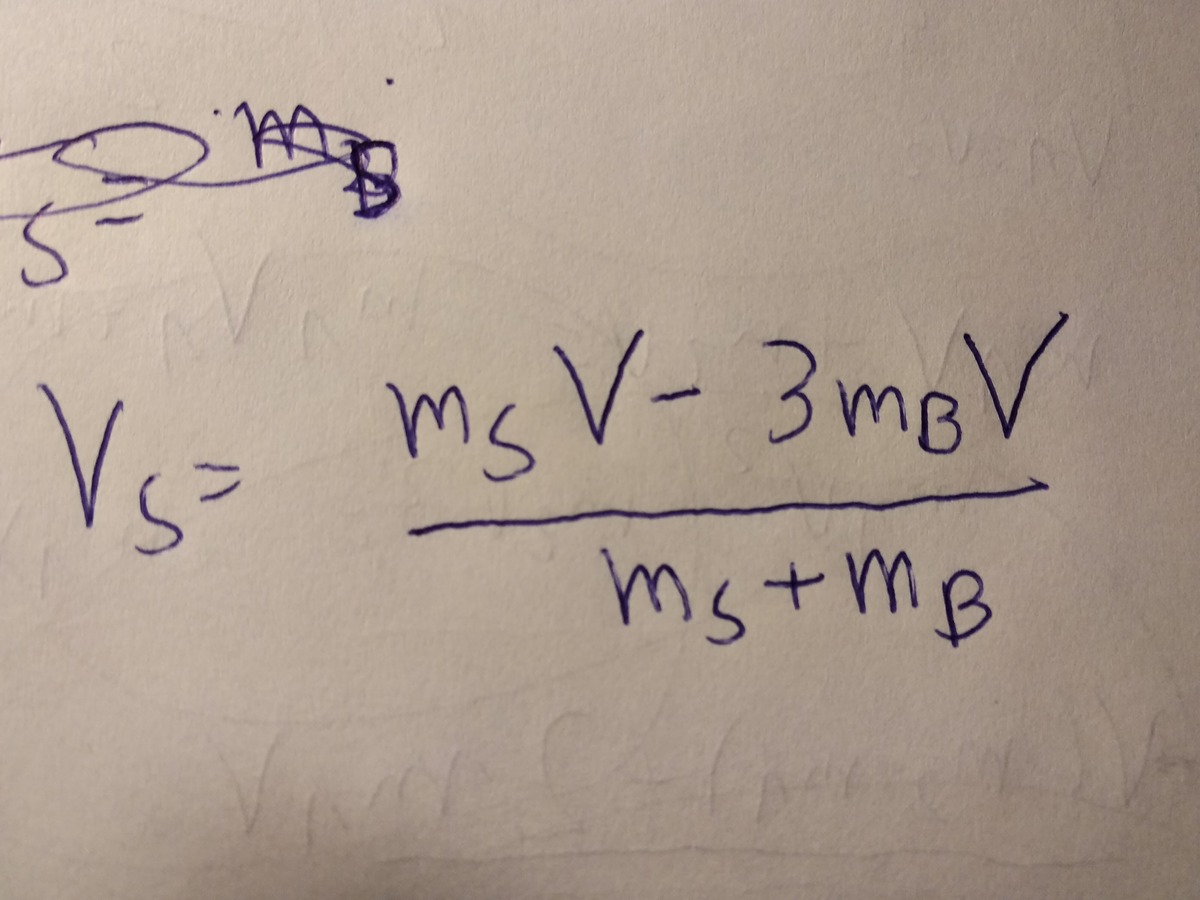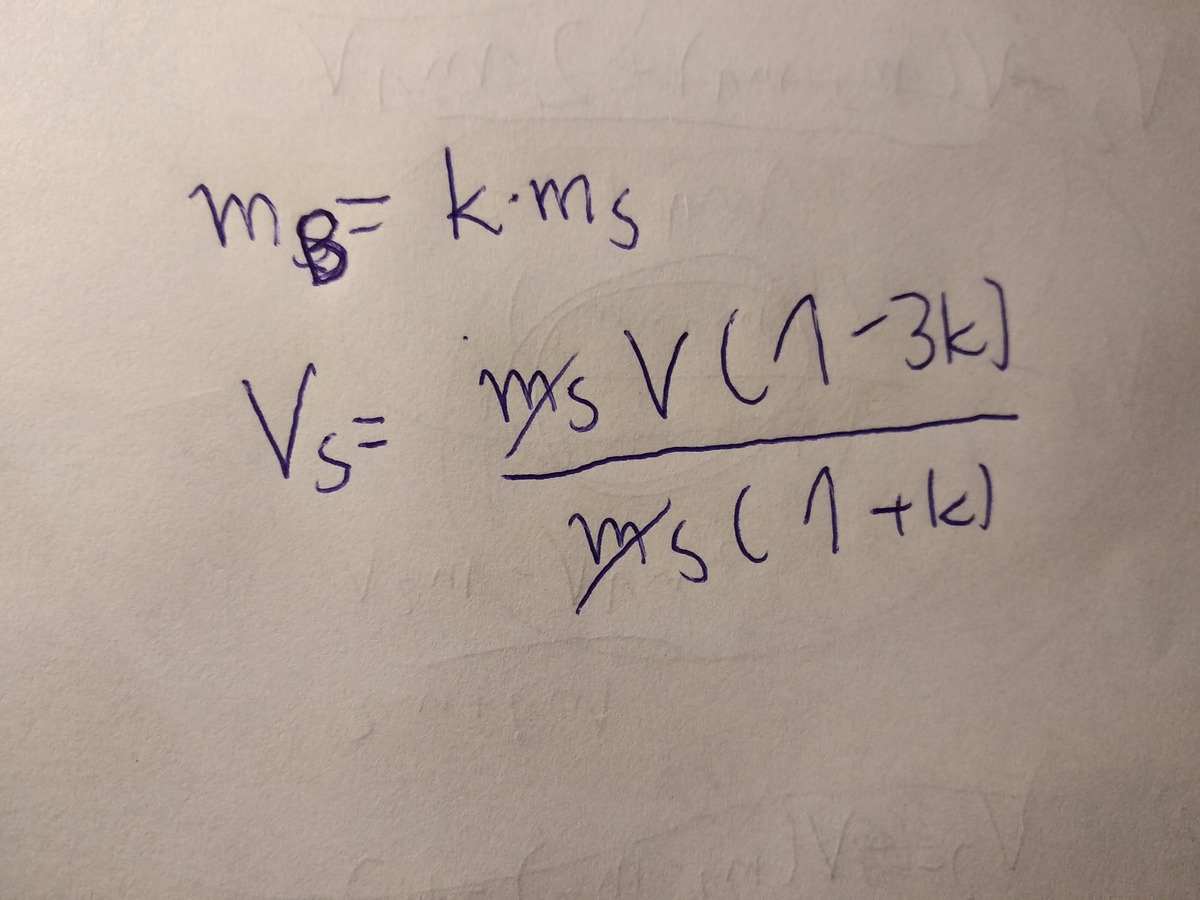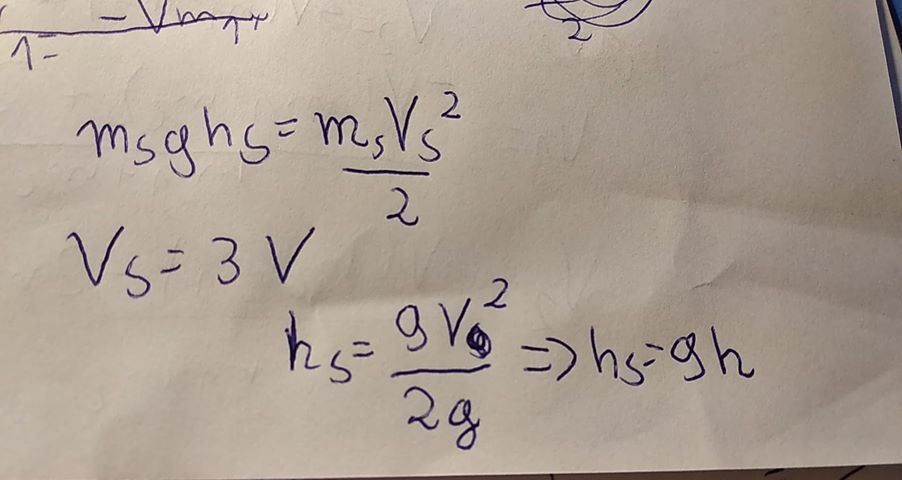High Bounce
Dick places a small ball exactly on the top of a bigger, heavier ball. He simultaneously releases the balls from a height of 1 meter above ground, as shown. He has chosen the masses of the balls so as to maximize the height up to which the smaller ball bounces.
How high above the initial position will the smaller ball bounce up to?
Assumptions:
- All collisions are perfectly elastic.
- Air resistance is negligible.
- The figure is not drawn to scale.
This section requires Javascript.
You are seeing this because something didn't load right. We suggest you, (a) try
refreshing the page, (b) enabling javascript if it is disabled on your browser and,
finally, (c)
loading the
non-javascript version of this page
. We're sorry about the hassle.





The formula for the height difference of lighter ball is:
Δ h = ( M + m ) 2 8 M ( M − m )
Maximum of this expression is equal to 8 .
Hint : Treat the collision from center of mass frame, it will save you some time.
Derivation :
Denote v o to be the speed of the falling balls relative to the ground at the moment when the heavier one hits the ground (they will both gain the same speed because they travel the same distance in the gravitational field, acceleration of which we are assuming is constant), M to be the mass of the heavier ball and m to be the mass of the lighter ball. Assuming elastic collision with the ground, heavier ball starts moving up with the equal velocity - v o - and collides with the lighter ball with velocity v o in the downward direction. Further on, denote v C o M to be the speed of centar of mass frame (CoM frame) relative to the ground, v h ′ and v l ′ to be the speed of the heavier and lighter ball relative to CoM frame, and v h and v l the speed of the heavier and lighter ball relative to the ground, respectively. Now, let us examine the collision between two balls in the CoM frame (positive direction is upward direction):
v C o M = M + m M v o − M + m m v o = v o M + m M − m
v h ′ v l ′ = v o − v C o M = v o M + m 2 m = − v o − v C o M = − v o M + m 2 M
These are the speeds before collision, but, as you will see, it won't be hard to find the speeds after collision. Since we are making measurements in CoM frame, balls have equal momentum, so they apply the same force on each other, and thus exit the collision with equal speeds but in opposite directions. We have:
v h v l = − v h ′ + v C o M = v o M + m M − 3 m = − v l ′ + v C o M = v o M + m 3 M − m
Finally, we have:
2 g ( h l + Δ h l ) 2 g ( 1 + Δ h l ) 1 + Δ h l Δ h l Δ h l Δ h l = v l 2 = v o 2 ( M + m 3 M − m ) 2 v o 2 = 2 g = ( 1 + 2 M + m M − m ) 2 = 4 M + m M − m + 4 ( M + m ) 2 ( M − m ) 2 = ( M + m ) 2 4 M 2 − 4 m 2 2 + 4 M 2 − 8 M m + 4 m 2 = ( M + m ) 2 8 M ( M − m )
Define new variable γ = M m . We expect to achieve a maximum height when this ratio is close to zero, which can be proven by calculus:
γ → 0 lim ( 1 + γ ) 2 8 ( 1 − γ ) = 8
Check out this chapter in Brilliant's Classical Mechanics course for deeper understanding of CoM frame and it's advantages.